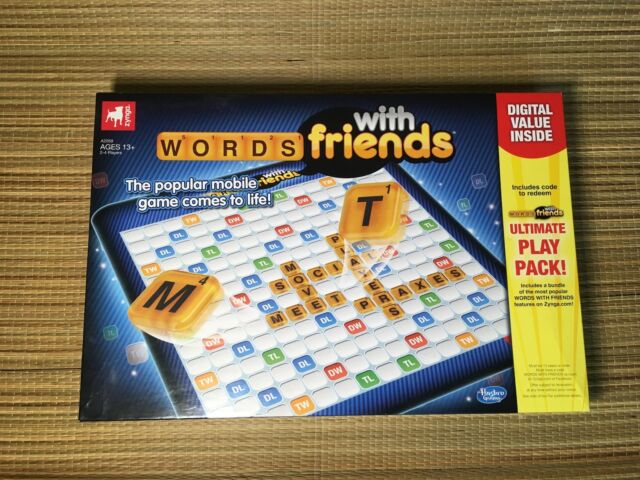If you’re looking for a quick game of free-for-all wordplay, Words with Friends is still the best option. The mobile app has been around since 2011 and allows you to play head-to-head against other players in different languages. It was originally developed by Zynga, but now it is owned by Electronic Arts.
The rules are simple – you have to rack up points by making words with letters that match on the board. Each player chooses one letter from their hand to be played. That means your opponent can’t just choose “the” when they want to make a word, because it doesn’t match any letters!
Words with Friends offers many ways to score, such as matching three or more letters in a row, spelling words made up of the same letters, making four vowels in a row (such as ee), and even playing on the board with an empty spot where two of the same letter can go. There are also special scoring cards, like the Bonus Card which lets you triple points, and wild tiles that let you skip your turn if you think you know what your opponent will do next. Find more info right here.

1. Choose the Right Deck Size
The first thing you should consider while starting a new game is the deck size. If you’ve never played Words with Friends before, you might find yourself having trouble figuring out the right number of letters to start off with. To get things started, we recommend choosing the smallest deck possible. For example, if you decide to use a five-letter deck, you’ll only have 52 options to work with instead of 100+!
This makes it easier to pick which letters to pair together. For instance, if you have a choice between E and I, you’ll probably end up going with E, because the second letter in that word is often A in Words with Friends. However, if you picked I, then there would be no way to make words using both those letters!
2. Know Your Opponent
It’s important to know who you’re playing against. In reality, you don’t really know anything about your opponents until you start playing. This is why it’s a good idea to keep a profile page set up so you can check out their stats and see what kind of player they are. Knowing this information will help you be able to plan out your strategy better.
Check Their Profile
When you sign into the game, click on the three dots in the top right corner and select “Profile”. Here you can view all kinds of useful information about your opponent, including:
- Their name
- How long they’ve been playing Words with Friends
- Their total matches won
- Their highest rank
- Whether they have a high roll
- Their current win streak
- A breakdown of their win streaks
You can also look at the most recent games they’ve played and their overall statistics in general. Be sure to check out the “My Stats” tab too, where you’ll find a lot more useful information. This includes things like:
- Their average rating
- Their average length of a game
- What language they prefer to play
- Which tiles they tend to use most frequently
- Where their favorite word starts and ends
- Their most frequent letters
- Once you’ve looked through your opponent’s profile, you can move onto the next step….
- Learn Their Play Style
After you’ve checked their profile, learn a bit about their play style. Does your opponent tend to use a lot of tiles? Or do they try to make lots of words with short letters? Try to figure out whether they play well under pressure or prefer to take a deep breath before making a decision. It’s also worth taking note of whether your opponent tends to make mistakes or not.
These are all signs that you shouldn’t necessarily expect them to go first every time. You may need to adjust your own play style accordingly in order to beat them in the end.
4. Use Special Features
There are plenty of features in Words with Friends that will give you an advantage over your opponent, even if you’re not particularly good at the game yet. These include the special scoring cards and the wild tiles.
The bonus card is a very handy feature that allows you to triple your points each round. All you have to do is place it in front of your rack, and then add three extra points to your total for each tile you manage to make. This works well in tournaments, where your goal is usually to accumulate as much points as fast as possible!

Wild tiles are another great tool you can use to throw off your opponents. If you feel you know exactly what your opponent will do next, you can use these wild tiles to skip your turn. Just tap on a wild tile and your opponent will have to guess what you’re doing next. Once you’ve guessed correctly, you can continue playing normally and rack up some points.
To use these features, simply press and hold the tile you want to use, then flick it to a blank space on the board. Wild tiles are indicated by a small icon with an X inside of it. They’re scattered randomly throughout the board, so you don’t always know where to go when you want to take a break. Make sure you pay attention to your opponent when you use these tiles, though, as they’re easy enough to miss.
5. Get Creative
One more tip you should remember is that you can’t always rely on the letters you’re given. Sometimes it helps to come up with alternative letters to pair with other ones, especially if you know you’re going to struggle to make a word. It’s also worth checking out the dictionary and looking up other words that start with the same letters as the ones you have available. For instance, if you’re trying to make the word “tease” but you only have the letters T, E, and S, you could pick I instead. Then you could use D to complete the middle part of “teaser”. This is a great trick to avoid getting stuck without a decent word.
Finally, you might want to experiment with making words by combining letters that aren’t used in English. For example, in Spanish, you can combine the letters G, R, and U to form GRU. This is a fun way to spice up your gameplay and create some interesting combinations!
